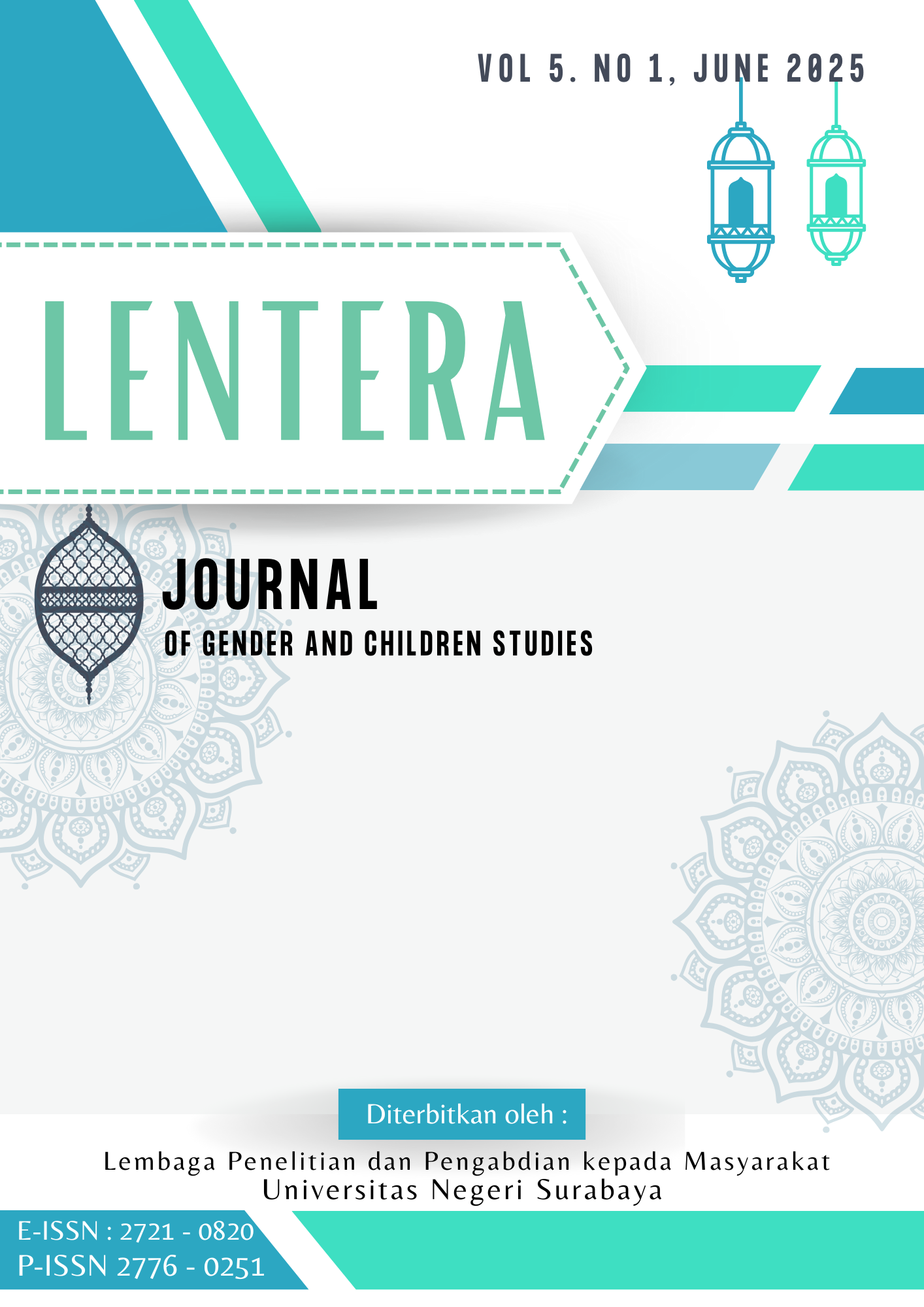REIZUKA ARI’S NARRATIVE STRATEGIES AND THEIR IMPACT ON TEENAGE GIRLS’ CONSUMPTION ON TIKTOK
Abstract
In the digital era, TikTok has become an influential social media platform that shapes people's consumption behavior. This study aims to analyze the role of Reizuka Ari as a content creator in creating digital consumption trends through narrative strategies and assertive communication. The researcher used a qualitative approach with a narrative content analysis method on several videos uploaded by Reizuka Ari that review food and beauty products. The analysis results show that Reizuka Ari consistently conveys product information clearly and relatably through a distinctive language style, strong expressions, and attractive visuals. He also utilizes the TikTok affiliate feature and builds active interactions with his followers. The combination of narrative elements, visuals, and an honest and persuasive communication approach successfully creates emotional engagement with the audience and encourages consumptive actions. This study concludes that content creators like Reizuka Ari are information providers and strategic agents who can influence digital consumption patterns through effectively curated content.
Keywords: Content Creator, Tiktok, Consumption Trends, Narrative Strategy, Digital Communication.
References
Achmad, Z. A., & Rahmawati, I. N. (2024). Strategi Marketing Berderma Melalui Crowdfunding di Akun Instagram @ikoy2an. Da’watuna: Journal of Communication and Islamic Broadcasting, 4(1), 278–295.
Ahmad, G. N., Fitriansyah, F., Lesmana, D., & Yudaruddin, R. (2024). The Impact of Social Media on Online Shopping Behavior of Gen Z Consumers in Time of Covid-19 Pandemic; The Moderating Role of Celebrity Endorsements. WSEAS Transactions on Business and Economics, 21, 266–279. https://doi.org/10.37394/23207.2024.21.24
Ajzen, I. (1991). The theory of planned behavior. Organizational Behavior and Human Decision Processes, 50(2), 179–211. https://doi.org/10.1016/0749-5978(91)90020-T
Akbari, D. A., Jastacia, B., Setiawan, E., & Widya Ningsih, D. (2022). The Marketing Power of TikTok: A Content Analysis in Higher Education. Binus Business Review, 13(2), 159–170. https://doi.org/10.21512/bbr.v13i2.8014
Anaqhi, A. W., Achmad, Z. A., Zuhri, S., & Arviani, H. (2023). Viralitas Trash Talking di Media Sosial Tiktok sebagai Gaya Baru Personal Digital Branding. Jurnal Nomosleca, 9(1), 67–87. https://doi.org/10.26905/nomosleca.v9i1.9487
Anca Jurj. (2019). Insta-Story For Personal Branding And Product Promotion. Politehnica Graduate Student Journal of Communication, 4(1), 47–55.
Carroll, J. S., & Anderson, N. H. (1982). Foundations of Information Integration Theory. The American Journal of Psychology, 95(4), 708. https://doi.org/10.2307/1422202
Cheung, M. L., Pires, G., & Rosenberger, P. J. (2020). The influence of perceived social media marketing elements on consumer–brand engagement and brand knowledge. Asia Pacific Journal of Marketing and Logistics, 32(3), 695–720.
Elli, D. M. (2017). The phenomenon and rise of Influencer Marketing and how it affects customer opinion and helps or damages brands. International Hellenic University, December 2017, 1–64.
Ernawati, A. (2022). Media Promosi Kesehatan Untuk Meningkatkan Pengetahuan Ibu Tentang Stunting. Jurnal Litbang: Media Informasi Penelitian, Pengembangan Dan IPTEK, 18(2), 139–152. https://doi.org/10.33658/jl.v18i2.324
Escalas, J. E. (2008). Narrative Processing: Building Consumer Connections to Brands. Journal of Consumer Psychology, 14(1–2), 168–180. https://doi.org/https://doi.org/10.1207/s15327663jcp1401&2_19
Fang, X., & Liu, M. (2024). How does the digital transformation drive digital technology innovation of enterprises? Evidence from enterprise’s digital patents. Technological Forecasting and Social Change, 204.
Fatimatuzzahro, F., & Achmad, Z. A. (2022). What If It Was You (#WIIWY) digital activism on TikTok to fight gender-based violence online and cyberbullying. Masyarakat, Kebudayaan Dan Politik, 35(4), 450–465. https://doi.org/10.20473/mkp.V35I42022.450-465
Green, M. C., & Brock, T. C. (2000). The role of transportation in the persuasiveness of public narratives. Journal of Personality and Social Psychology, 79(5), 701–721. https://doi.org/10.1037/0022-3514.79.5.701
Hartmann, T., & Goldhoorn, C. (2011). Horton and Wohl revisited: Exploring viewers’ experience of parasocial interaction. Journal of Communication, 61(6), 1104–1121. https://doi.org/10.1111/j.1460-2466.2011.01595.x
Hermawan, B. (2013). Multimodality: Menafsir Verbal, Membaca Gambar, dan Memahami Teks. Jurnal Pendidikan Bahasa Dan Sastra, 13(1), 19. https://doi.org/10.17509/bs_jpbsp.v13i1.756
Isroissholikhah, W. O. (2022). Efektivitas Content Creator dalam Strategi Promosi di Era Digital. SIBATIK JOURNAL: Jurnal Ilmiah Bidang Sosial, Ekonomi, Budaya, Teknologi, Dan Pendidikan, 2(1), 121–128. https://doi.org/10.54443/SIBATIK.V2I1.507
Jarvis, J. (2021). TikTok’s Next Big Gen Z Trend Might Be Viral Protests. Newsweek.
Jung, S., & Su, R. (2024). “Thank you all for following my journey”: Exploring the self-narratives and user engagement of disability community on TikTok. In Disability Self-Narratives And Engagement. University of Texas at Austin.
Kádeková, Z., & Holienčinová, M. (2018). Influencer marketing as a modern phenomenon creating a new frontier of virtual opportunities. Communication Today, 9(2).
Kapitan, S., & Silvera, D. H. (2016). From digital media influencers to celebrity endorsers: attributions drive endorser effectiveness. Marketing Letters, 27(3), 553–567. https://doi.org/10.1007/S11002-015-9363-0/METRICS
Katiaj, P., Farmakis, T., Koukopoulos, A., & Lounis, S. (2024). Storytelling in TikTok: A Path to Engagement. The Albanian Journal of Economy & Business, 4(39), 176–184.
Khelsea, Y. O., Achmad, Z. A., Tranggono, D., & Claretta, D. (2021). Etnografi Virtual Perilaku Impulsive Buying Remaja Muslimah Penggemar K-Pop di Surabaya. Jurnal Komunikasi Islam, 11(02), 264–289. https://doi.org/10.15642/JKI.2021.11.02.264-289
Klug, D., Qin, Y., Evans, M., & Kaufman, G. (2021). Trick and Please. A Mixed-Method Study on User Assumptions about the TikTok Algorithm. ACM International Conference Proceeding Series, 84–92. https://doi.org/10.1145/3447535.3462512
Knapp, M. L. ., & Daly, J. A. . (2011). The Sage handbook of interpersonal communication. 800.
Kusuma, T. H., & Sholikah, M. (2023). Marketing Content Analysis on the Tiktok Application Platform (Case Study of the Tiktok Account @Solocarifood). Scientia Journal, 12(03), 3646–3652. http://infor.seaninstitute.org/index.php
Lacasa, P., De la Fuente, J., García-Pernía, M. R., & Cortés, S. (2017). Teenagers, Fandom and Identity. Persona Studies, 3(2), 51. https://doi.org/10.21153/ps2017vol3no2art648
Lee, S. (2025). What Assertive Communication Means for Gen Z and Why Do They Need the Skills? International Journal of TESOL Studies, 250215(3), 1–13.
Littlejohn, S. W., & Foss, K. A. (2009). Encyclopedia of Communication Theory. SAGE.
Lowisz, S. (2017). The Influence of Social Media in Today’s Culture. Educating Professionls, 1–12.
Manullang, A. I. P. M., & Yahfizham, Y. (2023). Analisis Perbandingan Algoritma Pada Tiktok dan Instagram Sebagai Content Media Dalam Pemasaran. Sinar Dunia: Jurnal Riset Sosial Humaniora Dan Ilmu Pendidikan, 3(1), 99–109. https://doi.org/10.58192/sidu.v3i1.1795
Martin-Neira, J.-I., Irarrázaval, J., & Gómez, R. (2025). Visual Narative on TikTok: Analysis of the Impact on Engagement Based on the Tone of Scientific News Published by Media in Spain and Chile. Visual Review, 17(2), 187–202.
Maulana, M., & Sandyawati. (2023). Using Tiktok Social Media As a Marketing Promotion Media in Online Business. International Journal of Social Science, 3(4), 507–514. https://doi.org/10.53625/ijss.v3i4.7151
Natrio, Y., & Lestari, R. (2024). Examining Pragmatic Features in Tiktok Live Advertisement : A Case Study of Direct Selling Practices. ARRUS Journal of Social Sciences and Humanities, 4(3), 447–455.
Nicholson, B., Nielsen, P., & Saebo, J. (2021). Special issue: Digital platforms for development. Information Systems Journal, 31(6), 863–868. https://doi.org/10.1111/isj.12364
Nugroho, A., Florina, I. D., & Edy, S. (2024). Menggali Strategi Visual dan Naratif @tokomerekah dalam Membangun Brand Identitas di Instagram. Journal of Education Research, 5(3), 3158–3169. https://doi.org/10.37985/jer.v5i3.1489
Nursubchiana, I. I. I., & Zarkasi, I. R. (2024). Analisis Naratif Video Viral: Elemen Digital Storytelling dalam Video Ulasan Destinasi Kuliner TikTok. Seminar Nasional Penelitian Dan Pemberdayaan Masyarakat 2024, November, 74–85.
Oktaviana, M., Achmad, Z. A., Arviani, H., & Kusnarto, K. (2021). Budaya komunikasi virtual di Twitter dan Tiktok : Perluasan makna kata estetik. Satwika : Kajian Ilmu Budaya Dan Perubahan Sosial, 5(2), 173–186.
Ong, P. A. L. (2020). Visual Research Methods: Qualifying and Quantifying the Visual. Beijing International Review of Education, 2(1), 35–53. https://doi.org/10.1163/25902539-00201004
Perreault, M. C., & Mosconi, E. (2018). Social media engagement: Content strategy and metrics research opportunities. 51st Hawaii International Conference on System Sciences, 51, 3568–3577. https://doi.org/10.24251/hicss.2018.451
Purnamasari, N. P., & Tutiasri, R. P. (2021). Analisis Resepsi Remaja Perempuan terhadap Gaya Hidup Berbelanja Fashion Melalui Tayangan Video ‘Belanja Gak Aturan’ dalam Akun Tiktok @handmadeshoesby. Representamen, 7(01).
Putra, D. Y., & Achmad, Z. A. (2022). Interaksi Sosial Virtual dalam Permainan Among Us Indonesia. Jurnal Ilmu Komunikasi, 12(2), 163–176. https://doi.org/10.15642/JIK.2022.12.2.163-176
Risqiyanti, M., & Fauzi, M. M. (2024). Strategi Pemasaran Produk Fashion dengan Menggunakan TikTok Affiliate. Santri: Jurnal Ekonomi Dan Keuangan Islam, 2(4), 207–214.
Schellewald, A. (2021). Communicative Forms on TikTok: Perspectives From Digital Ethnography. International Journal of Communication, 15.
Shannon, R., & Chantavoraluk, C. (2019). Factors That affect to Customer’s Buying Descision Toward Social Media Influencers (Food Blogger). Mahidol University.
Sims, C. M. (2017). Do the Big-Five Personality Traits Predict Empathic Listening and Assertive Communication? International Journal of Listening, 31(3), 163–188. https://doi.org/10.1080/10904018.2016.1202770
Wardani, E. P., & Kusuma, R. S. (2021). Interaksi Parasosial Penggemar K-Pop di Media Sosial (Studi Kualitatif pada Fandom Army di Twitter). Bricolage : Jurnal Magister Ilmu Komunikasi, 7(2), 243. https://doi.org/10.30813/bricolage.v7i2.2755
Wijaya, N., & Utami, L. S. S. (2021). Pengaruh Penyampaian Informasi pada Aplikasi TikTok terhadap Perilaku Konsumtif Generasi Z. Prologia, 5(2), 267. https://doi.org/10.24912/pr.v5i2.10171
Windi, R., & Tampenawas, J. L. A. (2023). Pengaruh Influencer Marketing, Content Marketing dan Efektivitas Tiktok Affiliate Terhadap Brand Awareness Skincare Hanasui (Study Kasus pada Mahasiswa Jurusan Manajemen Universitas Sam Ratulangi Angkatan 2023). Jurnal EMBA: Jurnal Riset Ekonomi, Manajemen, Bisnis Dan Akuntansi, 11(3), 772–784.
Wulandari, E. (2021). Utilization of the Tiktok Video Application as a Means of Showing Existence And Self-Disclosure of Teenagers on Social Media. International Journal of Social Science And Human Research, 04(09), 2610–2616. https://doi.org/10.47191/ijsshr/v4-i9-48
Xu, L., Yan, X., & Zhang, Z. (2019). Research on the Causes of the “Tik Tok” App Becoming Popular and the Existing Problems. Journal of Advanced Management Science, 7(2), 59–63. https://doi.org/10.18178/joams.7.2.59-63
Zenobia, Z., & Christin, M. (2024). Strategies of Virtual Influencers Crafting Viral Content in Indonesia Strategi Influencer Virtual Membuat Konten Viral di Indonesia. ETTISAL: Journal of Communication, 9(2), 345–371.
Zhao, X. A., & Abidin, C. (2021). Tiktok’s ‘fox eye’ trend and everyday activism: gen z agency in an audiovisual narrative case study. #AoIR2020: AoIR Selected Papers of Internet Research. https://doi.org/10.5210/spir.v2021i0.12267
Downloads
Published
How to Cite
Issue
Section
 Abstract views: 418
,
Abstract views: 418
, PDF Downloads: 272
PDF Downloads: 272



